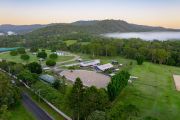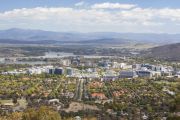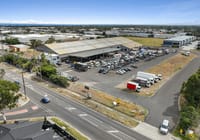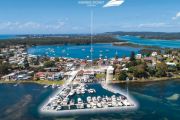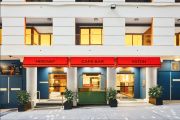
Sydney office towers perform as strongly as housing
Rents and capital values in Sydney’s office towers will surge this year as an accommodation squeeze pushes up the price of space.
Sydney is predicted to be the top performer for annual rental growth among the major global markets this year, with growth of between 10 per cent and 15 per cent this year, according to JLL.
Office rents already climbed 22.5 per cent in 2016, as stock withdrawals to accommodate the new metro line or for residential conversion put pressure on available space.
As well, Sydney is expected to be one of the top markets, along with Moscow, for capital growth, according to the JLL analysis of global property markets. Values are forecast to rise 12 per cent this year.
The cyclical upswing in Sydney’s office market now rivals the energy in its residential market where prices have risen 18.4 per cent in the past 12 months.
“Australia is a beneficiary of two major global trends – investment portfolios increasing exposure to real estate, and funds increasing their capital allocations to Asia Pacific,” said Rob Sewell, JLL’s head of office investments.
“Australia will see a large proportion of this capital. Australia is a highly transparent market, ranking as the second most transparent real estate market globally.
“Further, cross-border investors have retained a degree of risk aversion in their investment activities. This will be supportive of greater capital allocations to Australia, with the volatility of returns in Australia lower – through the cycle – than other markets within Asia Pacific.”
Capital values rose in the Sydney CBD by 12.8 per cent in 2016. A further 12 per cent growth is expected in 2017.
“This is well above long-term benchmarks and reflects the strong returns of income-producing assets with strong underlying fundamentals,” Mr Sewell said.
Simon Storry, JLL’s head of international investments in Australia said: “Asian investors that remain the most active are from Singapore and Hong Kong but we are starting to see a greater level of interest from Japanese firms both from a debt and equity point of view.”
Demand for A-grade space in Sydney’s CBD is very high. Vacancy in the A-grade market fell to just 5.5 per cent in 2016. Vacancy in the broader market hit 7.7 per cent, the lowest vacancy rate across all CBD markets nationally.
Vacancy is expected to tighten further in the face of strong demand. Declining vacancy will drive robust rental growth over the next 12-24 months with Sydney now set to be one of the best performing markets globally, according to JLL.
